You are visiting your favorite fine dining establishment and order a cheese and charcuterie board for the table. It arrives in a gorgeous culinary display that you would love to duplicate at home. This may leave you wondering what kind of wood the boards are made from and if you have many options to choose from so you can match your decorating style. Well, you are in luck! We researched the best woods used for cheese and charcuterie boards to choose the one that is right for you!
Cheese and Charcuterie boards are usually made from good quality, non-porous hardwood. You can easily find them in:
- Teak
- Acacia
- Hard Maple
- Cherry
- Olive
- Bamboo
- Walnut
- Oak
Now that you know what your options are keep reading to find out the specific qualities of each kind of wood, what size you need, how to make your own, and care for it.
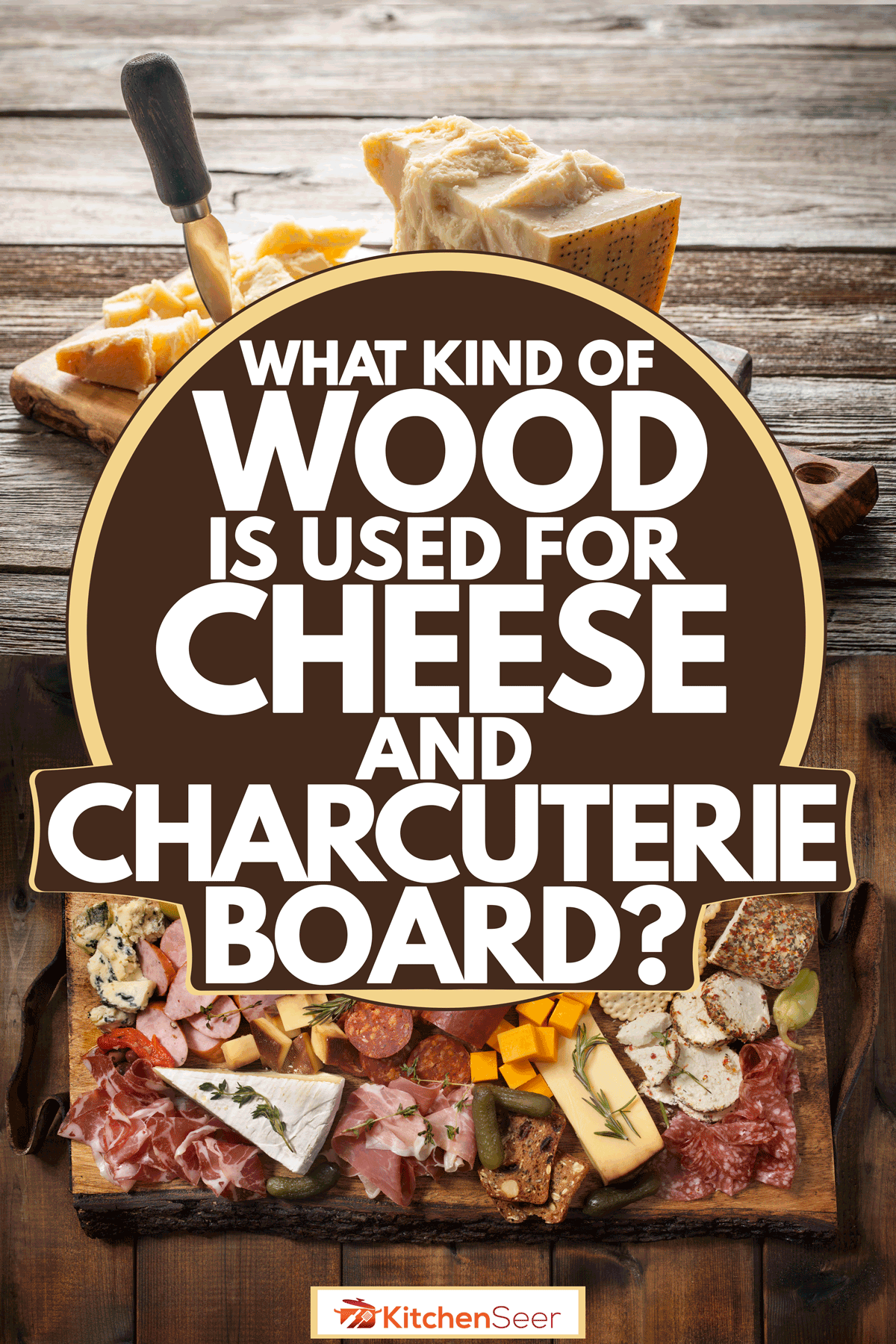
Best Woods For A Cheese And Charcuterie Board
Many beautiful hardwoods are amazing to use for a charcuterie board. The exact board you choose can add that certain something to your social events. You can design your menu around your board or have a few options so you can set the right tone for your dinner party theme.
1. Teak
Teak is an environmentally-friendly hardwood that is water-resistant and highly durable. All of these qualities, as well as its gorgeous patterns, make this wood ideal for serving. A set of smaller boards, like these from Kordes, are easy to carry and allow you flexibility in serving style.
Click here to see this on Amazon.
2. Acacia
Acacia is another popular choice for its beauty, durability, and sustainability. It is a semi-hardwood, so it is forgiving to your knives as they slice through delicious meats and cheese for display. An excellent example is this stunning board from The Blue Oak Company.
Click here to see this on Amazon.
3. Hard Maple
Display a spread of American wholesomeness crafted from locally sourced fruits, cheese, and meats on a sturdy board made from hard maple. Maple is a durable hardwood that is pale blonde in color, which gives it a different look than most other woods. Below is John Boos Block Board as a prime example of what to look for.
Click here to see this on Amazon.
4. Cherry
A perennial favorite for its rich red tones, cherry wood, is the perfect choice for an upscale arrangement of gourmet delights! Create a delightful edible centerpiece on this elongated cherry and walnut board from Sapper Woodworking. It is handmade, and with proper care, the rich red tones will only get more and more luxurious.
Click here to see this on Amazon.
5. Olive
Nothing gives your event a rustic Tuscan flair like an olive charcuterie loaded with handmade, rare cheeses, olives, grapes, and imported meats from Italy! Olive wood is hard enough to last for years and has a stunning grain that is unmatched. This board from Tramanto shows this off to perfection!
Click here to see this on Amazon.
6. Bamboo
Another option that is durable, sustainable, and surprisingly affordable is the mighty bamboo! Charcuterie boards made from this wood are easy to find and a perfect choice for the environmentally-conscious hostess. An elaborate serving board like this one from Royal Craft Wood will elevate your girl's night in!
Click here to see this on Amazon.
7. Walnut
Another classic American hardwood, Walnut makes an excellent cutting or charcuterie board! It is one of the hardest woods, and it is also heat-resistant, which is excellent if you want to incorporate hot foods into your serving platter! A small round board like this one from Befano is great for small gatherings, or invest in a long board like the one below for larger parties!
Click here to see this on Amazon.
Click here to see this on Amazon.
8. Oak
A glowing golden circle of oak can bring the sunshine to your dinner party! Oak is a common choice for cutting boards and serving boards due to its durability and availability. Its beautiful color is universally loved and will match many styles of decor.
Click here to see this on Amazon.
Non-Wood Options
If you are looking for something truly out of the ordinary, wood isn't the only option! Try a stone charcuterie board! Slate and Marble are two excellent choices. Opt for a small size as stone can get heavy, especially when laden with a smorgasbord of treats!
Slate
Slate is great because it is lightweight, and you can also write on it like a chalkboard. This is super handy if you are serving a tasting menu and want to label your offerings. It is also easy to clean and can be submerged in water if need be. Slate can be brittle, though, so be careful when handling it.
Click here to see this on Amazon.
Marble
For a sturdier option, marble is a great choice! White marble with rich veining running through it makes for an elegant display. Marble can also be chilled, which can help keep soft cheeses from getting too soft during service.
Click here to see this on Amazon.
What Is A Good Size For A Charcuterie Board?
The best size for a charcuterie board depends on the number of guests and the amount of food you want to serve. An average board is 9"x 12", but it can be smaller or larger depending. You can also mix and match boards of varying sizes for an eclectic display. It is better to use multiple boards than to try to cram everything onto one to-small board.
How Do You Make A Wooden Cheese Board?
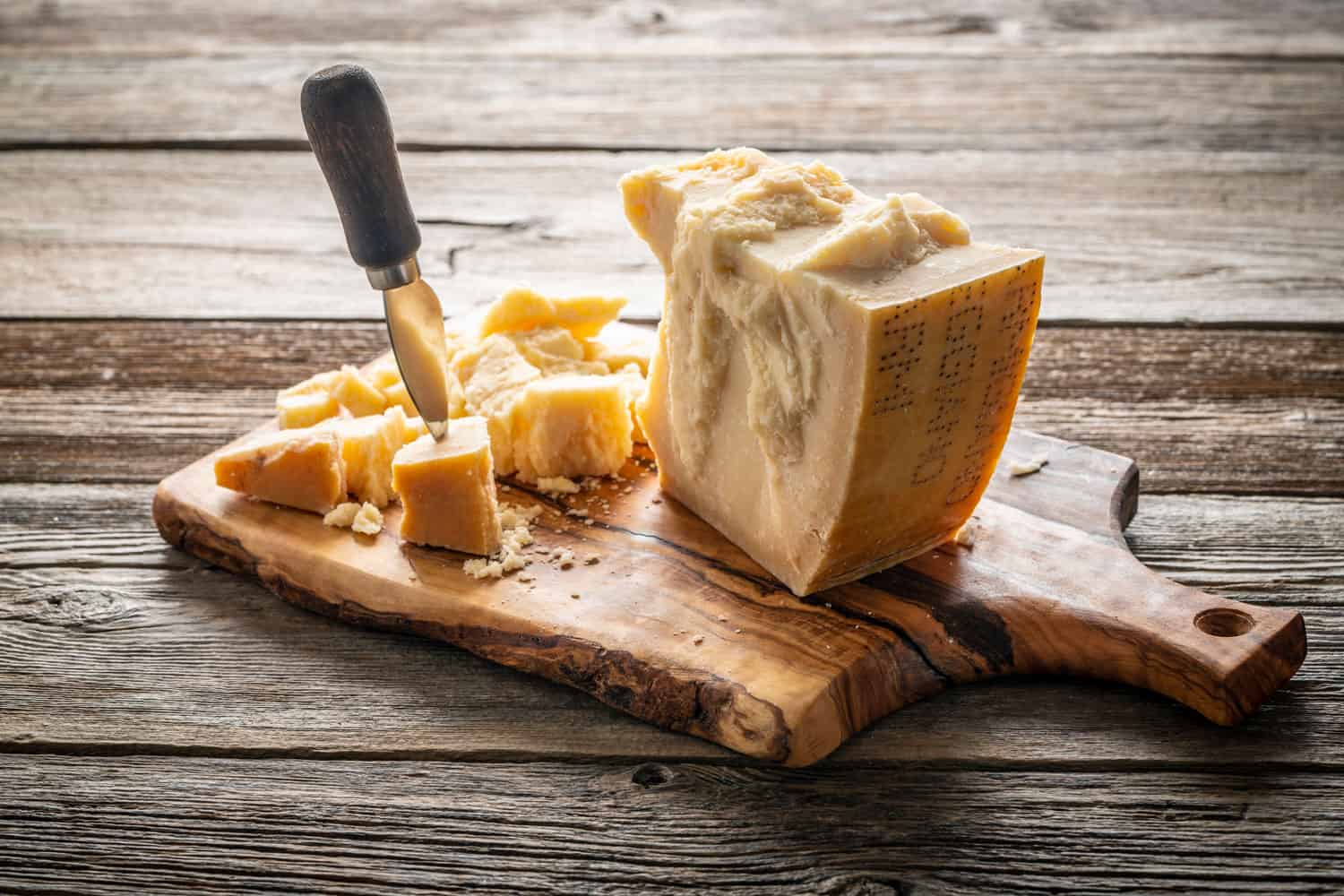
Are you the crafty type and want to try your hand at making your very own custom cheese board? With the right tools and a little know-how, it is easier than you might think!
Preparation
To complete this project, you will need the following:
- Dropcloth to protect your workspace
- A hardwood board of your choosing. If you are not handy with a saw, then look for one that is already the right size!
- Sanding block
- Food Safe Finish
- Soft cloth or sponge
Cover your workspace with a drop cloth to allow for easy cleanup and prevent dripping from the finish.
Sand The Wood
Use the sanding block to round the edges of the wood, and smooth the surfaces. If the wood is particularly rough, start with a coarser sanding block, then use a fine grain block to refine the surface. If you have an electric sander, this can make the job much quicker.
How Do You Seal A Wooden Cheese Board?
It is critical to properly seal the wood with a good, food-grade sealant to prevent water damage or staining from certain foods. You can hand rub the wood with food-grade mineral oil, tung oil, beeswax, or a butcher block oil. For best results, massage the finish into the wood grain with a soft, clean cloth. If you do this once a month to maintain your board, it will last for years!
Butcher Block Oil
Mineral Oil
Click here to see this on Amazon.
Tung Oil
Click here to see this on Amazon.
Beeswax
Allow To Dry
Your new charcuterie board will need to dry for at least two hours before using. Make sure that whatever you use to seal it is thoroughly dry before you use your board.
For a simple walkthrough, check out this video on Youtube!
How Do You Clean A Wood Charcuterie Board?
Cleaning your charcuterie board is relatively simple. Whatever you do, do not submerge your board in water. This can ruin your board!
- Wipe the food remnants from your board with a clean cloth
- Using just a small amount of dish soap on a sponge or dishcloth, wash the board's surface.
- For tough spots, use a soft bristled-dish scrubber to remove any stuck-on debris gently.
- Disinfect with a 2:1 mixture of water and vinegar. Apply this over the entire board.
- Deodorize your board by coating the board in coarse salt then using a cut lemon to scrub.
- Rinse with the water and vinegar solution.
- Dry with a soft towel.
Serve With Style
A well organized and artful charcuterie board is an elegant addition to any social gathering or as an appetizer for your next dinner party. Thankfully there is a wide variety of wood types to buy or make your next charcuterie board from!
For more serving ideas, check out these posts on Kitcheseer.com!
What Do You Serve With Cheese Boards?















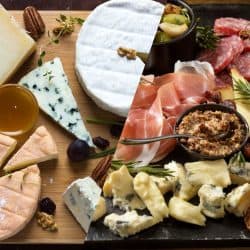
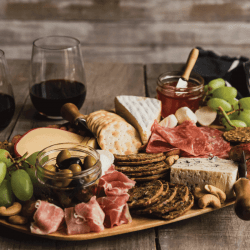
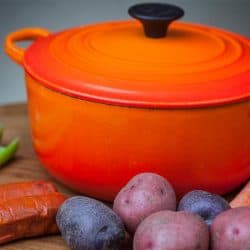
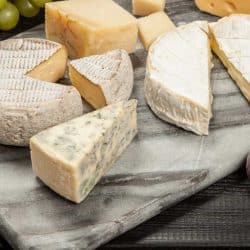
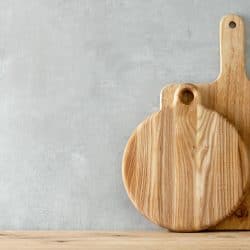
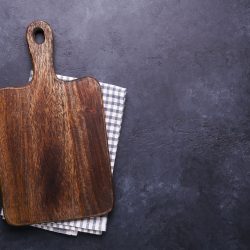
I love reading about different types of wood used in the kitchen!